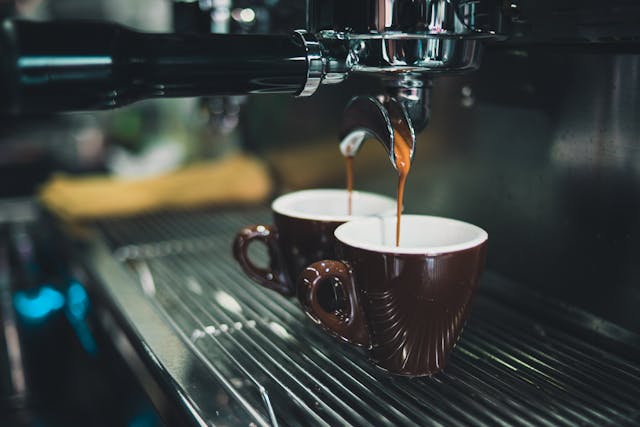
Photo from Pexels
For those who like coffee, the brewing technique may make all the difference between a decent and a great cup. Whether it’s the French press’s assertiveness, the ease of an automated drip machine, or the deliciousness of a slow pour, every brewing method accentuates unique features in your coffee beans. Understanding how various brewing techniques interact with the beans, water, and grind size can help you get the best possible performance from your preferred roast. Every method achieves a different harmony of tastes, textures, and smells. It’s about improving the sensory experience of every cup, not just about the method the coffee is brewed. Let’s investigate which of drip, French press, and pour-over brewing techniques produces the ideal cup.
The French Press’s Unconventional Strength
The French press is renowned for generating a full-bodied, creamy coffee with great taste and texture—also known as a press pot. This approach starts from coarsely ground coffee beans in hot water and then presses the grounds through a mesh filter. The French press lets more oils and fine coffee particles stay in the brew without using paper filters, therefore producing a richer, almost velvety feel. Offering a stronger sensation, the oils expelled from the beans provide a depth of taste sometimes lacking in other techniques. The French press distinguishes itself in part by allowing control over the brewing process. Unlike automated methods, this approach lets the grinds be completely submerged, therefore, every component of the coffee comes into touch with water and absorbs the most flavor. Usually four minutes, the extended steeping period accentuates the delicate flavors in coffee beans, which makes it preferred among people who value a stronger cup.
The Clean Simplicity of Pour Over
Often seen as an artisanal technique, the pure simplicity of pour-over brewing produces a cup of coffee with greater delicacy than the French press. This technique lets hot water gently stream over ground coffee beans via a filter, letting the water pass through the grounds and trickle into a cup underneath. Pour-over accentuates the more subdued tastes and smells of the coffee beans by stressing accuracy and control, therefore producing a brilliant, sophisticated taste that appeals especially to individuals who value complex flavors. Pour-over’s simplicity makes it beautiful. The technique inspires attention to detail and awareness of one’s actions. The output depends much on grind size, pour rate, and water temperature as well as other factors. A consistent, even pour guarantees that the coffee grounds are equally soaked, therefore preventing either under- or over-extraction. Particularly light to medium roasts, this technique is ideal for single-origin coffees as it accentuates their distinct flavor characteristics free from oil or sediment influence. When brewed pour-over style, Guatemalan coffee—with its vivid acidity and fruity undertones—shines. The slow and consistent flow of water over the grinds lets the inherent sweetness and vivid flavors of Guatemalan beans come through in a manner other brewing techniques may not be able to do.
The Harmonious Simplicity of Drip Coffee
Convenience and regularity make drip coffee machines a mainstay in households and businesses. Although some may see drip coffee as a more practical choice than French press or pour-over, it strikes a mix between simplicity and quality. This approach drips water automatically heated over coffee grinds kept in a filter. Before entering a carafe, the water runs around the grounds, picking tastes and smells. Though more hands-on brewing techniques usually take the stage, drip coffee machines shine in simplicity. For busy mornings or bigger parties, they are perfect as they provide a steady brew without requiring continual supervision. The machine controls flow, water temperature, and time to produce a dependable cup, even if it is not as personalized. A paper filter eliminates oils and small particles from the brew, which is why drip coffee makers may utilize one. This produces a lighter, cleaner cup than the richness of a French press. To enable some degree of customizing, some sophisticated drip machines do, however, provide additional control over factors such as brew strength and temperature.
Conclusion
Every brewing technique—French press, pour-over, drip coffee—has its appeal and advantages. The pour-over presents a clean and delicate cup; the French press gives a strong and rich taste; and the drip machine provides constant convenience. Knowing the characteristics of every technique enables coffee lovers to make wise judgments depending on their taste and way of life. Whether one is looking for strong clarity or powerful richness, there is a brewing method just appropriate for every coffee lover.

